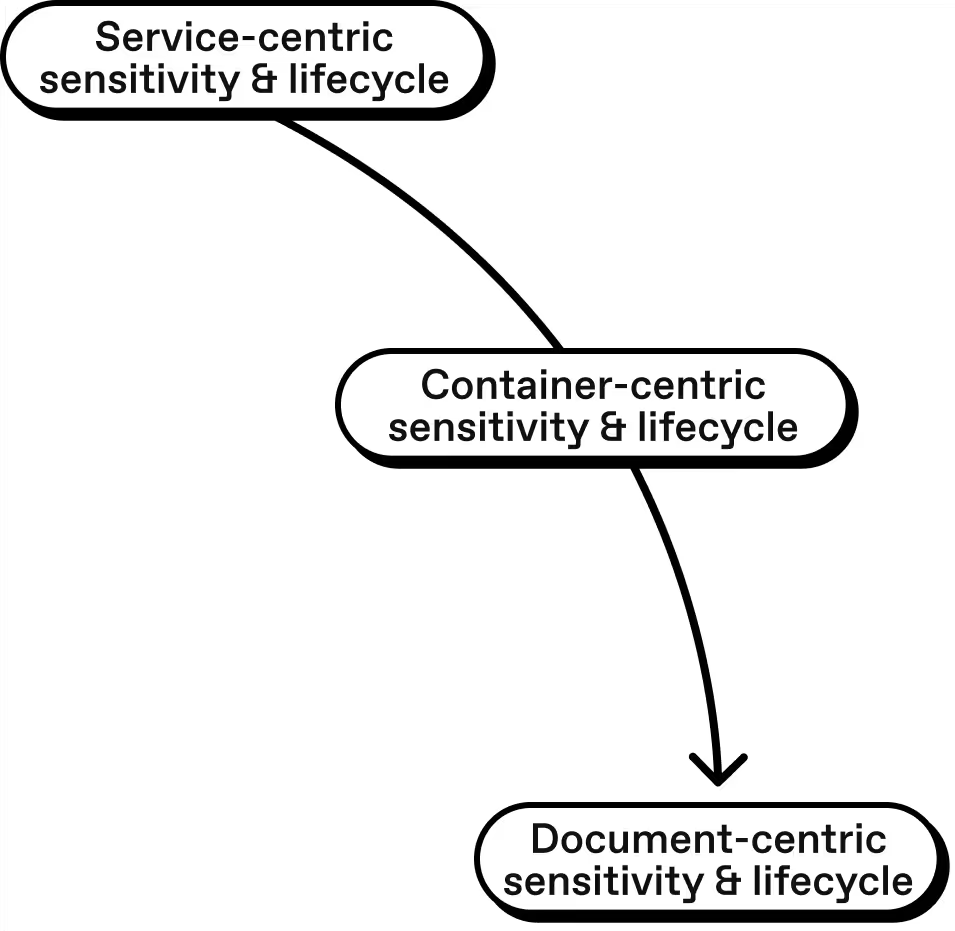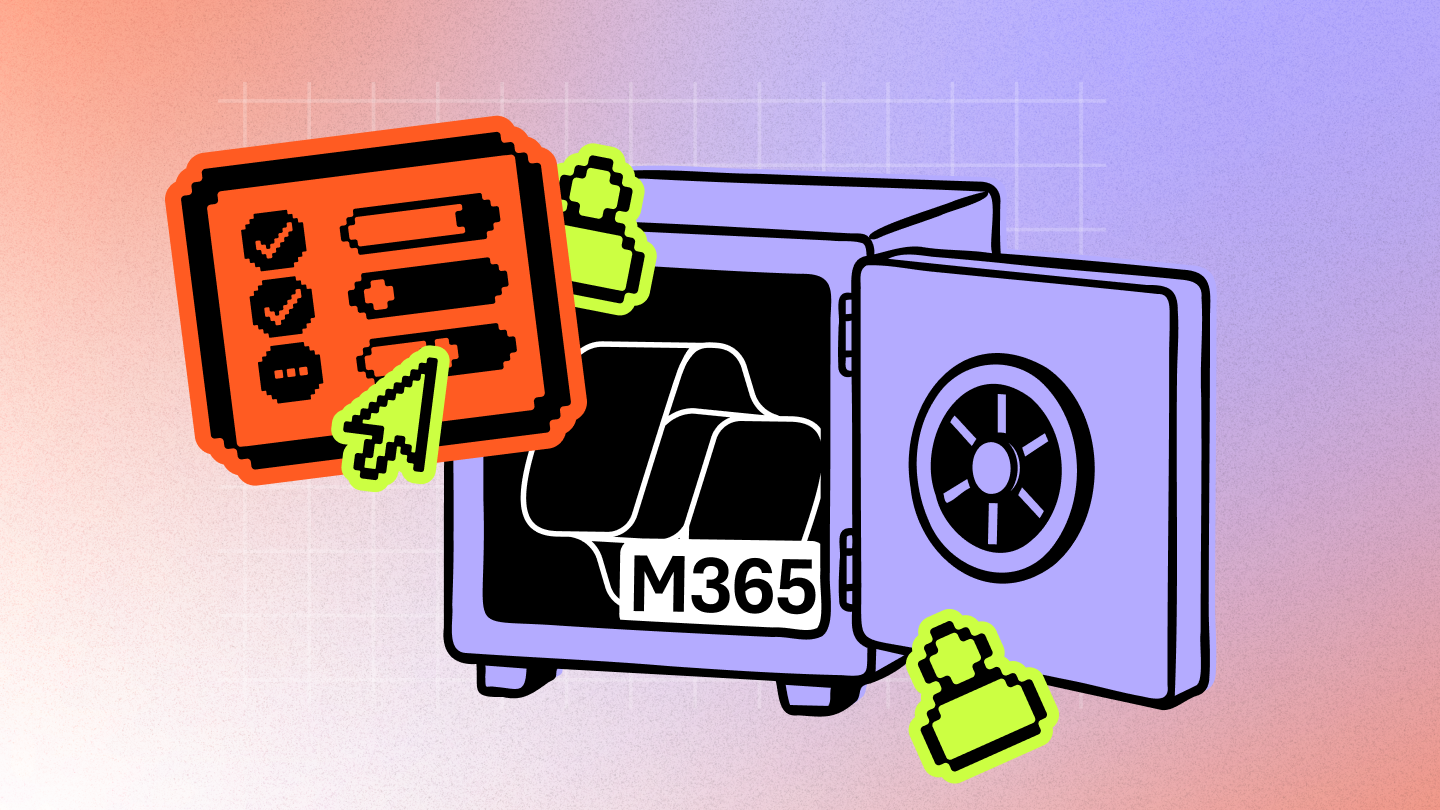Microsoft 365 Copilot governance: Managing AI volume and preventing oversharing

Table of contents
AI boosts productivity—but it also floods Microsoft 365 with content. Here’s how to stay in control with smart governance and adoption.
More content means more challenges for IT. You've got to manage this explosion of data, keep sensitive information from being overshared, and stay compliant, all without slowing anyone down. No pressure, right?
IT teams need a smarter way to govern all this new content. It's time to shift toward a document-centric approach—one that balances AI with smart, scalable governance.
We’ve already covered how IT teams can accelerate AI adoption and maximize ROI. We’ve explored how agents, automation, and collaboration can help you manage AI’s complexity. Now, we’ll focus on another critical piece of the puzzle: managing AI’s growing content chaos with document-centric governance strategies. Let’s break it down!
Why AI volume is a governance priority
AI is flooding your digital workspace with content. Here's why smart governance is key to staying in control.
Exponential content growth
What was once a manageable stream of content has now become a flood of documents, emails, and collaborative files happening in real-time.
Understanding these challenges is critical for prioritizing governance efforts and laying the groundwork for later solutions.
Why it matters:
- Data overload: Traditional governance models, designed for lower volumes of human-created content, struggle to keep up with the rapid growth of AI-generated data.
- Complexity and variability: AI-generated content may lack a uniform structure, making it harder to manage, search, and audit.
- Impact on decision-making: With more data comes the risk of information overload, burying critical insights under redundant or inconsistent information.
What to consider:
- Understand the lifecycle of your digital documents.
- Reflect on how the nature of content is changing—consider both volume and the less predictable formats of AI-generated data.
- Scale governance strategies accordingly. Modern governance requires a fundamental shift in how we measure and manage content volume.
Oversharing risks
As AI-driven systems integrate with collaboration platforms (such as Teams and SharePoint), the likelihood of unintentionally sharing sensitive information increases. The automated nature of AI can sometimes bypass traditional manual checks and the speed of adoption can lead to gaps in oversight.
Why it matters:
- Sensitive data exposure: AI-generated recommendations and automated processes may unintentionally surface or share confidential information.
- Blurred boundaries: Modern work environments have less distinct separations between internal and external data flows, increasing the risk that information intended for internal use leaks outside the organization.
What to consider:
- Understand who has access: Not just to documents, but also how AI tools might alter or accelerate the sharing process.
- Balance automation with security: Copilot speeds up work but governance must keep up.
- Reassess sensitive labeling: Ensure sensitive data is labeled and protected at the document level.
Adoption fatigue
The rapid pace of AI adoption can overwhelm employees who are required to learn new systems and adapt to constantly evolving digital workflows. Even as AI promises productivity gains, the continual influx of new capabilities and tools can lead to burnout and resistance.
Why it matters:
- Employee overload: Without proper enablement, rapid AI adoption can overwhelm teams.
- Learning curve: Employees need time to understand AI interactions, prompt engineering, and automation workflows.
- Cultural shift: Balancing technological innovation with user well-being is critical; without careful management, the workforce may struggle to keep pace with AI-enabled changes.
What to consider:
- Prioritize user experience: Adoption fatigue is as much a human challenge as it is a technological one. Recognize that the human element must be part of any discussion about AI governance.
- Build continuous training into AI rollouts: Ongoing support is key to successful adoption.
Understanding these challenges is the first step in developing an effective governance strategy. By examining the root causes and potential impacts—ranging from data overload to the risks of oversharing and the human cost of rapid technology adoption—leaders can more clearly prioritize where to focus their efforts.
How to manage AI-driven content growth with proactive Microsoft 365 Copilot governance and adoption
A proactive approach to adoption and governance is key to managing AI’s growing impact on content volume and capabilities. This means focusing on document-centric strategies that use the right risk management tools.
Instead of relying on siloed controls at the application or service level, IT should take a team-centric approach to adoption and a data-centric approach to content governance.
Key strategies for AI success
- Adopt document-level sensitivity and security
- Proactively manage oversharing risks
- Focus on team-based adoption
- Leverage advanced automation tools
- Integrate governance across platforms
- Tackle adoption as a service
1. Adopt document-level sensitivity and security
Use Microsoft Purview to enforce sensitivity labels at the document level, ensuring compliance and protection of sensitive data throughout its lifecycle.

Sounds simple, right? But many organizations struggle to accelerate these deployments--not because of cost, but due to expertise gaps and fear of disruption without the right scope and rollout plan. The good news? There are proven approaches like the 10-step strategy we covered in our webinar to close the gap in data and content governance.

Beyond implementing Purview and advancing your container-level governance, don’t forget to optimize your approach over time. That could mean establishing and maintaining standard operating procedures (SOP) for applying sensitivity labels at document creation or scheduling regular review cycles (e.g., quarterly audits) to revalidate classifications and adjust policies as needed.
2. Proactively manage oversharing risks
Oversharing is a growing concern—particularly with AI generating and surfacing content in new ways.
SharePoint Advanced Management helps IT stay in control with Data Access Governance reports, which show exactly when and where sharing happens across your tenant. It also leverages sensitivity labels to pinpoint where sensitive data is stored, helping you proactively manage access and reduce risks.
Beyond monitoring, IT teams also need the right tools to prepare for Copilot and ensure AI is working with the right data. That’s where ShareGate comes to the rescue.
Here’s how:
- Simplify your environments by consolidating data across your tenants to ensure Copilot pulls from clean, well-organized sources.
- Keep data secure by monitoring and managing oversharing and guest access to prevent unintended exposure.

- Save time cleaning up by bulk-editing metadata and identifying inactive teams and groups so end users (and Copilot) find what they need faster
3. Focus on team-based adoption
AI adoption works best when it’s a team effort rather than an individual initiative. A team-based approach means providing shared access to Copilot licenses and implementing enablement initiatives at the team level. This helps foster collaboration, collective learning, and faster adoption.
In my experience, organizations that take this team-based approach see up to 3X the ROI on their adoption investments compared to rolling it out on an individual basis.
In today’s rollout of AI technologies, planning for scale from the outset is critical.
Best practices for team-based AI adoption
- Rapid, cohesive rollouts: With a team-based model, you no longer need to wait for each pilot to roll out across all users. Instead, teams that request, receive, and are trained on AI capabilities can begin using the technology immediately. This rapid deployment is crucial in the era of AI, where exceptions matter and scalability is achieved by balancing individual independence with coordinated orchestration.
- Transparent nomination processes: Adopting a team approach naturally supports an open and fair nomination process. Many organizations require that a nomination for AI enablement includes at least three team members. This collective nomination not only clarifies the purpose, context, and rationale behind the request but also minimizes perceptions of favoritism, ensuring that AI tools are seen as a shared resource rather than an exclusive individual advantage.
- Enhanced feedback and sharing: Teams tend to provide more richer feedback and higher survey response rates, which can be critical for continuous improvement. A team environment encourages the sharing of success stories and best practices that benefit the whole organization, rather than just highlighting individual gains. Furthermore, teams that collaborate across departments often identify common challenges and innovative solutions, leading to more sustainable and impactful adoption.
Organizations that take a team-based approach (to Copilot adoption) see up to 3X the ROI on their adoption investments compared to rolling it out on an individual basis.
Richard Harbridge, Microsoft MVP
4. Leverage advanced automation tools
As AI transforms the way we work, automation isn’t just about governance—it’s about making life easier for everyone, from IT to HR and beyond. Security and lifecycle management matter, but organizations also need automation to keep up with AI’s rapid changes.
Take employee experience automation. Tools that streamline onboarding, training, and workforce planning help teams adapt faster and work smarter.
For example, automated onboarding doesn’t just simplify AI adoption—it helps new hires and team transfers get up to speed quickly, with custom experiences tailored to how their team uses AI.
Not all automation tools can keep up with AI’s pace. The best ones give business users more control while ensuring IT stays in charge.
5. Integrate governance across platforms
Siloed governance strategies won’t cut it anymore. If you want governance that actually works across your organization, it’s time to move beyond isolated policies to a proactive, integrated governance framework that covers all Microsoft 365 applications—and even extends to platforms like Microsoft Viva and Power Platform. Here are some tips:
- Adopt a unified governance framework: Develop a common set of governance policies (e.g., data classification, retention, access controls) that apply across all Microsoft 365 applications.
- Create governance champions: Appoint or empower team leaders who understand the policies and can guide their teams in compliance with best practices.
- Regularly review and update policies: The digital workplace is dynamic—schedule periodic reviews of your governance framework to incorporate updates from Microsoft 365 and end-user feedback.
- Bridge legacy and new platforms: Ensure that your governance strategy covers both legacy applications and emerging platforms. For example, integrate Microsoft Teams and Outlook policies with those impacted by Microsoft Viva Amplify to maintain consistency, even as new tools are added to your ecosystem.
6. Tackle adoption as a service
In the AI era, adoption isn’t just a one‐and‐done project—it’s an ongoing journey. As AI tools evolve and user expectations keep rising, IT’s role needs to shift from gatekeepers to trusted guides, helping teams continuously learn, adapt, and get the most out of AI.
So, how do you make “Adoption as a Service” a reality? Let’s dive in:
- Establish and evolve centers of excellence: Create a hub for sharing best practices, training materials, and governance standards. Start with a cross-functional team that includes IT, compliance, and business leaders. Over time, evolve this group into a vibrant community that continually disseminates knowledge and updates adoption strategies as AI capabilities mature.
- Implement continuous training and change management: Move beyond one-off training sessions. Develop role-specific training programs and host interactive workshops like “prompt-a-thons" to keep pace with emerging best practices.
- Foster a culture of peer learning: Encourage internal AI communities like “Copilot Champions”— where employees mentor peers, share success stories, and collectively troubleshoot challenges,
- Monitor, measure, and adapt proactively: Leverage analytics tools to track adoption patterns, gather user feedback, and pinpoint areas that need improvement. This continuous monitoring isn’t just about identifying gaps—it’s about regularly refining your support and training programs to ensure that the service you provide evolves along with the technology.
By treating AI adoption as an ongoing service, IT can drive sustained success—ensuring that learning, support, and governance stay baked into everyday operations.
The ROI of proactive governance and adoption
When you combine a solid governance strategy that puts documents and teamwork first with ongoing support for AI adoption, you get real, measurable business benefits:
- Stronger security and compliance: Embedding governance into every layer—from document creation to team collaboration—reduces oversharing risks and protects sensitive data, which builds trust across the organization.
- Streamlined operations and cost savings: Automating governance processes, such as sensitivity labeling and regular content audits, saves IT time and reduces administrative overhead. This frees up IT to focus on innovation rather than routine tasks, leading to significant operational savings.
- Increased productivity and competitive advantage: When employees work within secure, well-governed, and continuously supported environments, they can harness AI’s full potential—tripling ROI on AI investments and driving faster, measurable productivity gains.
Proactive governance isn’t just about AI-driven growth—it's about turning it into a strategic advantage.
By integrating governance with a continuous, “Adoption as a Service” mindset, you're not just protecting your organization—you’re setting it up for long-term AI success. Instead of scrambling to keep up, you’re turning AI into a real competitive advantage, not just another compliance headache.
.jpg)


.svg)
.avif)
%20(1).avif)












.jpg)


.png)

